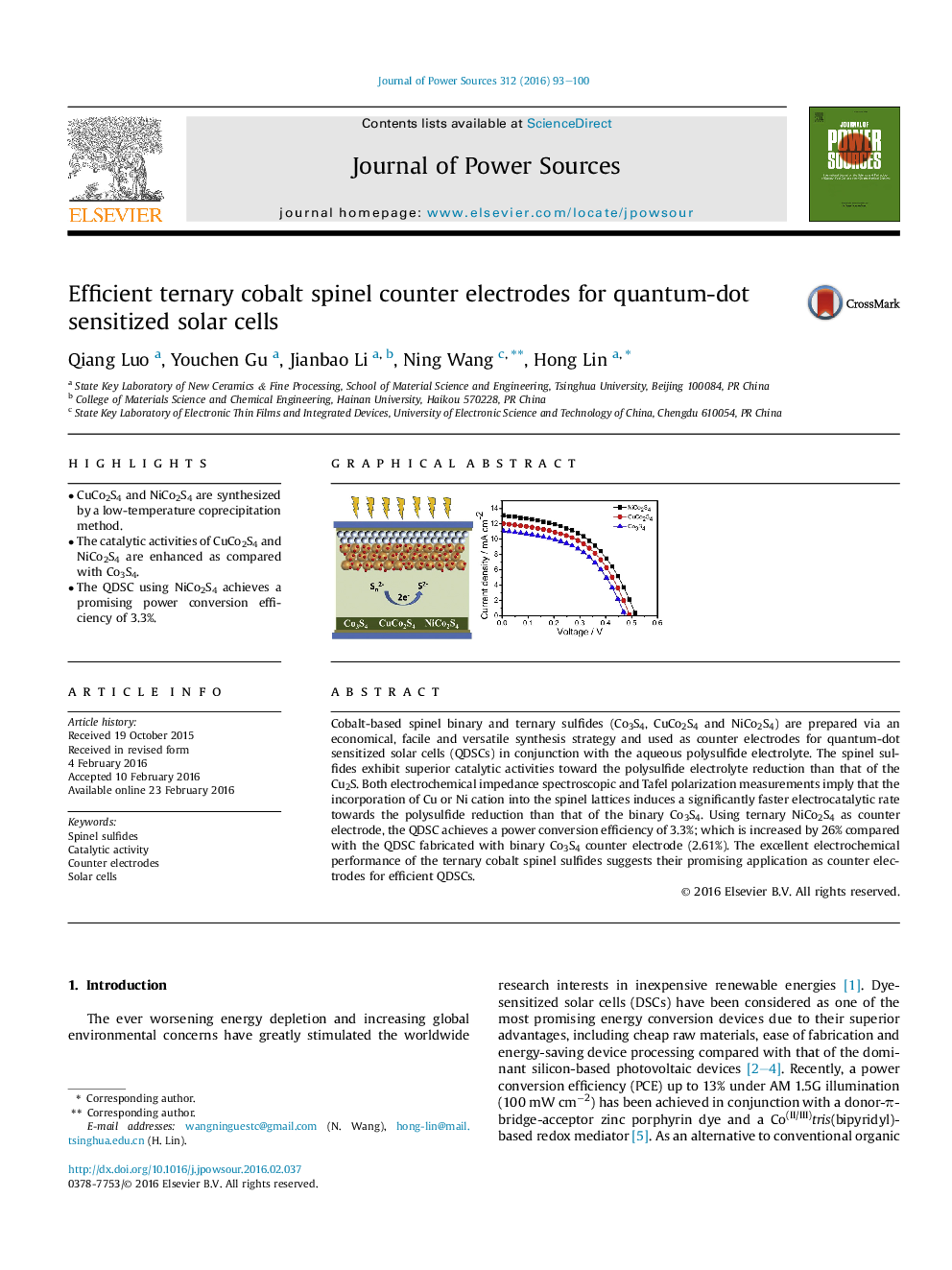| Article ID | Journal | Published Year | Pages | File Type |
|---|---|---|---|---|
| 1285469 | Journal of Power Sources | 2016 | 8 Pages |
•CuCo2S4 and NiCo2S4 are synthesized by a low-temperature coprecipitation method.•The catalytic activities of CuCo2S4 and NiCo2S4 are enhanced as compared with Co3S4.•The QDSC using NiCo2S4 achieves a promising power conversion efficiency of 3.3%.
Cobalt-based spinel binary and ternary sulfides (Co3S4, CuCo2S4 and NiCo2S4) are prepared via an economical, facile and versatile synthesis strategy and used as counter electrodes for quantum-dot sensitized solar cells (QDSCs) in conjunction with the aqueous polysulfide electrolyte. The spinel sulfides exhibit superior catalytic activities toward the polysulfide electrolyte reduction than that of the Cu2S. Both electrochemical impedance spectroscopic and Tafel polarization measurements imply that the incorporation of Cu or Ni cation into the spinel lattices induces a significantly faster electrocatalytic rate towards the polysulfide reduction than that of the binary Co3S4. Using ternary NiCo2S4 as counter electrode, the QDSC achieves a power conversion efficiency of 3.3%; which is increased by 26% compared with the QDSC fabricated with binary Co3S4 counter electrode (2.61%). The excellent electrochemical performance of the ternary cobalt spinel sulfides suggests their promising application as counter electrodes for efficient QDSCs.
Graphical abstractQuantum dot-sensitized solar cells fabricated with ternary cobalt spinel counter electrodes (CuCo2S4 and NiCo2S4) show higher power conversion efficiencies than that of the device with the binary Co3S4 counter electrode.Figure optionsDownload full-size imageDownload as PowerPoint slide
